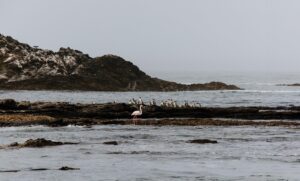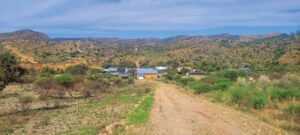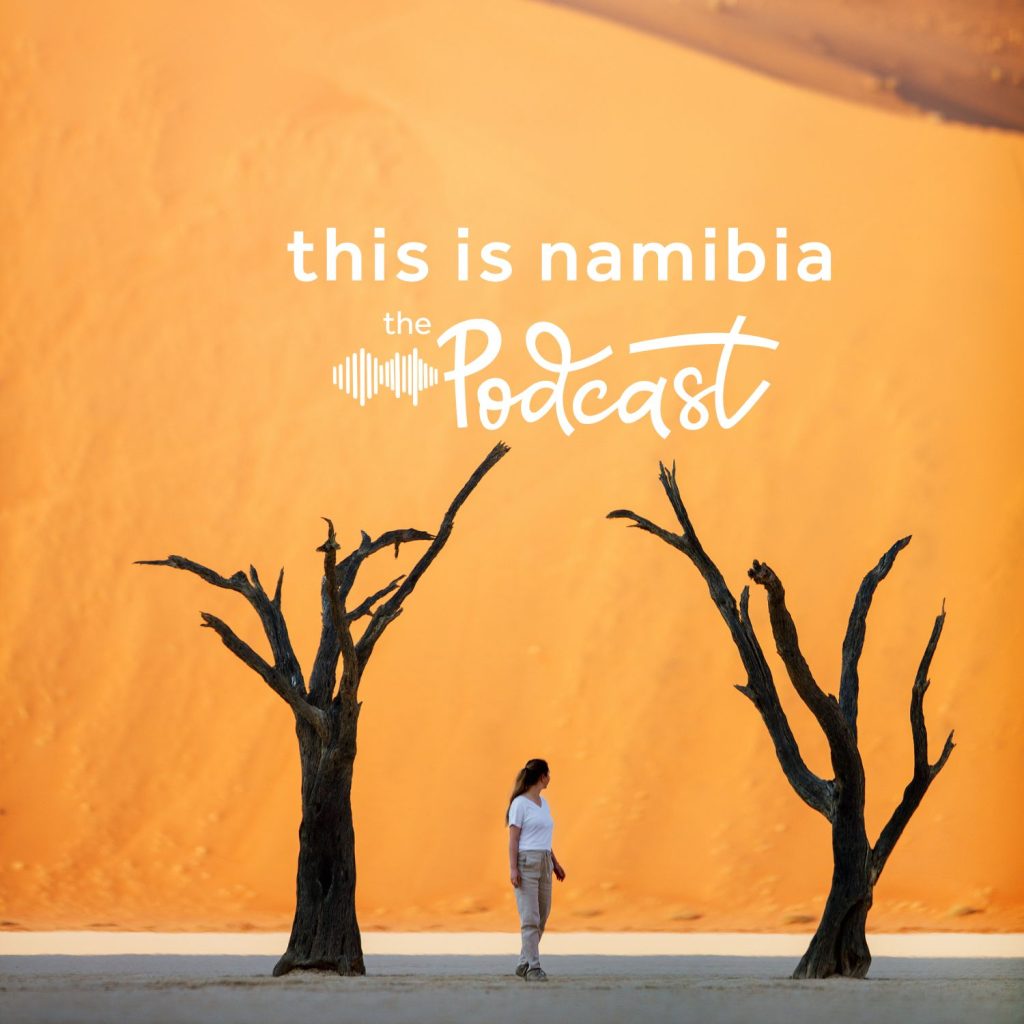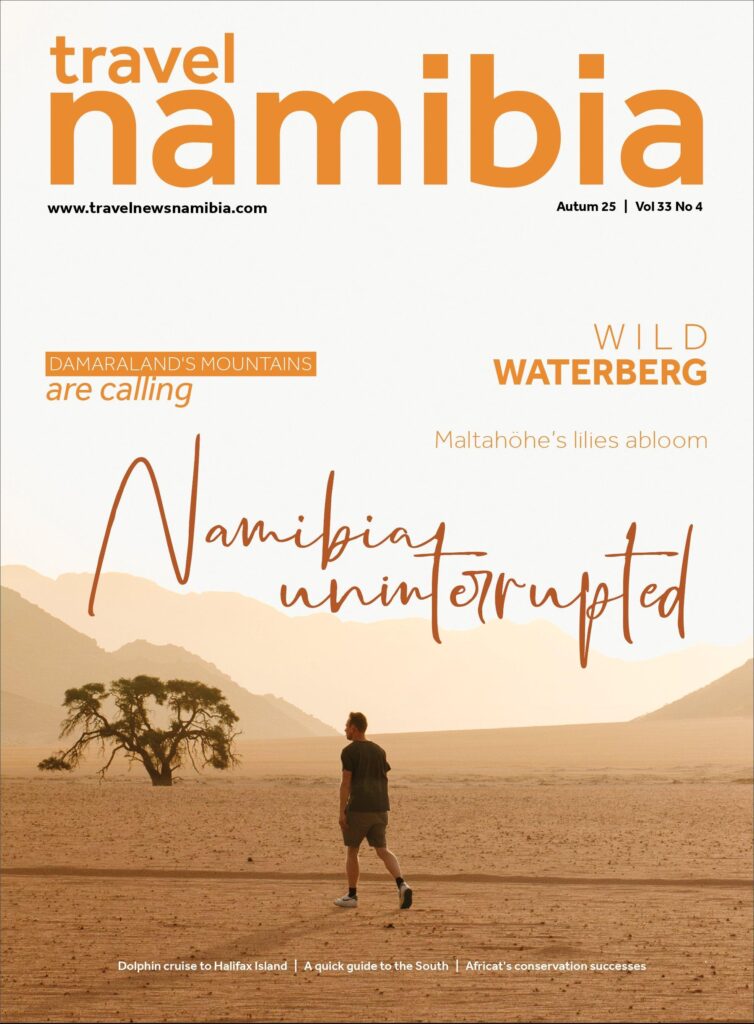

Earth to Light: The Alchemy of Stone
Lyrical, fluid abstraction. Curvilinear lines fall into spirals of perfect geometry. Shadows gather and leap, surfaces glimmer. Light bounces off the contoured stone, creating the illusion of movement and malleability. As the sculpture turns – some have been fixed on turntables and are gently spun by hand – a new interpretation is revealed. The sculpture itself seems to be nearly weightless, taking flight.
Text Madeleen Duvenhage | Photographs Winfried Holze Urban Design Architecture
Earth to Light is WHUDA (Winfried Holze Urban Design Architecture) Marble Art’s first solo exhibition at the National Art Gallery of Namibia (NAGN), featuring 18 original white marble statues. Each sculpture is deliberately displayed in its own “cubicle” – partitioned off by dark green dividers in a large, unadorned room – allowing for a slower, more meditative viewing experience. This thoughtful composition truly delivers: the particular allure of white marble in its soothing, ethereal state is all the more illuminated against the stark minimalism of the gallery’s empty space.
Architect Winfried Holze, founder of WHUDA Marble Art, recalls a moment in 2018 when, while working alone on a sculpture at an industrial site, he paused and thought to himself: “I am always working alone. Why not turn this into something bigger, something that adds value and promotes skills transfer?” That spark of inspiration led him to gradually expand his workshop, increasing its capacity and acquiring specialised Italian stone sculpting tools. Holze pressed on, placing an ad in the newspaper where he invited anyone interested in stone sculpting to join him. Only two people responded, but that did not stop them. Undeterred, they laid the foundation for a pioneering project, establishing three distinct categories of production: tourist articles (such as miniature rhinos and elephants), special commissions and their own personal artworks. Today, WHUDA Marble Art Namibia has evolved into a growing collective of emerging local visual artists, each exploring and developing their own authentic voice and style in the field of marble art.
WHUDA Marble Art is the only workshop in sub-Saharan Africa to make use of the distinctive characteristics of Namibia’s white marble stone. Winfried Holze explains: “Namibian marble is a hard, metamorphic limestone rock, which ranges from pure white to a variety of grey shades with veined patterns. Our marble is especially beautiful because the crystals within are fractionally larger than the more common Carrara marble, giving it a mystical transparency and a glimmering effect when placed in direct sunlight, enlivening the artworks and making them very special indeed.”
The raw material is sourced from near a small town called Karibib, where the largest sub-Saharan marble deposits are found. Salvaged from the quarry, WHUDA repurposes the offcut material, or so-called “rejects”, and this is where the creative and meticulous sculpting process begins.
I am told the strength of the marble lies in its overall surface thickness. Still, some of the sculptures have been expertly chiselled until nearly transparent. Held against the light, another layer of beauty unfurls.
These locally crafted works are shifting perceptions among both local and international audiences. In Namibia, art exports are typically expected to feature abstract clay masks, wooden or bronze sculptures, as well as woven textiles. Traditionally, stone has not been a preferred medium for many artists in Namibia. However, this exhibition seeks to change that perception. It offers a bold invitation to viewers to reimagine the overlooked Namibian marble in a different light – not only to be utilised for manufacturing terrazzo floors, kitchen tiles and tabletops, but a stone with an elevated, even magnetic purpose.
“Our goal,” Holze emphasises, “is to remain deeply rooted in Namibia.” The artists are careful not to just replicate Zimbabwean marble stone art – though there is much to learn from it – but instead, to root their creations in singularly Namibian spiritualism and mysticism. While Holze continues to mentor and guide the young sculptors from the sidelines, they are encouraged to explore their own authentic expression.
During the exhibition, I am introduced to local talents Isai Alfeus and Wolradt Sithole, both students from the College of the Arts. Also featured alongside them are William Chindoko and Kambezunda Ngavee. Each sculpture on display demonstrates the individuality and multifaceted imagination of its creator, from Alfeus’ smooth and flowing forms to Sithole’s convoluted, curved shapes. Together, these works embody the spirit of WHUDA: a collaboration of unity through the diversity of Namibian artists mastering their craft.
Future dreams
Tapping into his background as architect and urban planner, Holze’s long-term ambition is to restore art to architecture in Windhoek and brighten (in a literal sense) the cityscape into streets dotted with original white marble installations. “We as sculptors have a responsibility towards our viewers – past, present and future,” he says.
WHUDA Marble Art Namibia are now exploring ways to diversify further by creating smaller, more mobile pieces – artworks that can sit comfortably on a living room table or be easily transported abroad as decor or collectibles. Next on their horizon is Cape Town, where the same sculptures will be showcased. The aim is to allow some time for traction, fostering local engagement and building awareness, ultimately introducing Namibian marble stone art to a broader, international audience.
Local wonder
While studying Isai Alfeus’ sculpture Infinity, my mind wandered back to my first introduction to marble statues over a decade ago in Florence, Italy. I remember standing before Michelangelo’s David, his ageless gaze towering over me in sombre veneration. This classic, colossal sculpture inspired awe, no doubt, but I felt like a stranger, aloof, gingerly peering in from the margins.
This time felt tangibly different. A closer, more familiar connection; an encounter steeped in the land itself. Purely, undeniably Namibian. TN
More to explore


Discover Airlines launches a new direct flight between Windhoek and Munich




Discover Airlines launches a new direct flight between Windhoek and Munich





